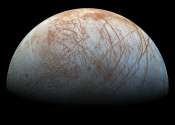Could there be life on Jupiter's moons?
The search for life outside of Earth has taken many forms. Mars, our neighbouring world, looks like it was once habitable. Perhaps too Venus, despite its current hellish conditions. But in recent years, scientists' gazes ...









